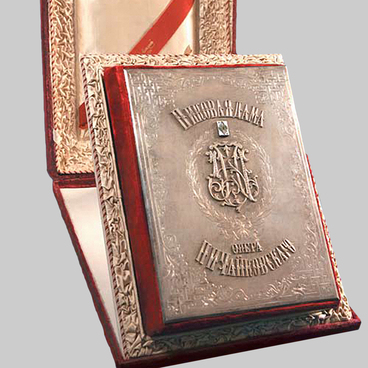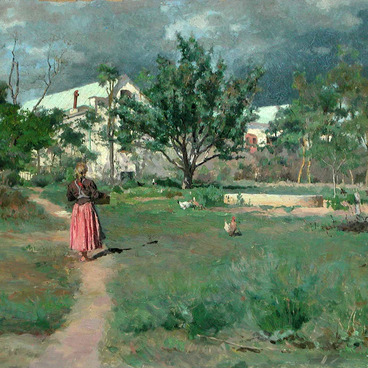Tchaikovsky received this statuette of the Gallic rooster from his friend and actor LuciEn Guitry. Guitry was the leading actor of the French drama company of Mikhailovsky Theater in St. Petersburg.
The gift was symbolic. The rooster is considered the symbol of France. The Romans used the word ‘Gallus’ for tribes that lived in modern France, Belgium, parts of Switzerland, Germany, and Northern Italy. Moreover, red-haired Celts were called ‘gallus’ for their red tufts of hair that resembled rooster combs.
The same word was used for the combative bird. Cockfights were some of the first animal competitions where the wins of their owners were determined by pari-mutuel betting.
Lucien Guitry was one of the biggest admirers of Tchaikovsky’s talent. The composer had Lucien’s photograph in his living room in Klin, with a note: ‘To Pyotr Tchaikovsky from your biggest fan and the most loving friend’.
Pyotr equally admired Guitry’s work and talent. When Tchaikovsky saw him in Alexandre Dumas' Kean: Genius or Scoundrel, he was so impressed with Guitry’s acting that he promised to write music for Shakespeare’s Hamlet if the actor agreed to play in it.
In 1888, the Mariinsky Theater was supposed to stage a charity performance featuring the French drama company of Mikhailovsky Theater. Lucien Guitry was again tasked with asking Tchaikovsky to create an overture for the play. The composer agreed. Shakespeare was already one of Tchaikovsky’s favorite authors, and he had been considering writing music for Hamlet for a long time. The play was not staged, but Pyotr Ilyich who had already started working on the project decided to create a fantasy overture, Hamlet, for a symphony orchestra.
In 1890, Guitry asked Tchaikovsky to create music for Hamlet again. That play was supposed to become the actor’s farewell benefit night. Tchaikovsky agreed. The audience liked the music, although the author himself thought it was “nonsense”, as he put it.
Having returned to his home country, Guitry sent Tchaikovsky the symbol of France — a bronze rooster, as a sign of his gratitude. The statuette was created by Auguste Ken — a sculptor whose works can be found in the Luxembourg Gardens and the Tuileries Garden.
The gift was symbolic. The rooster is considered the symbol of France. The Romans used the word ‘Gallus’ for tribes that lived in modern France, Belgium, parts of Switzerland, Germany, and Northern Italy. Moreover, red-haired Celts were called ‘gallus’ for their red tufts of hair that resembled rooster combs.
The same word was used for the combative bird. Cockfights were some of the first animal competitions where the wins of their owners were determined by pari-mutuel betting.
Lucien Guitry was one of the biggest admirers of Tchaikovsky’s talent. The composer had Lucien’s photograph in his living room in Klin, with a note: ‘To Pyotr Tchaikovsky from your biggest fan and the most loving friend’.
Pyotr equally admired Guitry’s work and talent. When Tchaikovsky saw him in Alexandre Dumas' Kean: Genius or Scoundrel, he was so impressed with Guitry’s acting that he promised to write music for Shakespeare’s Hamlet if the actor agreed to play in it.
In 1888, the Mariinsky Theater was supposed to stage a charity performance featuring the French drama company of Mikhailovsky Theater. Lucien Guitry was again tasked with asking Tchaikovsky to create an overture for the play. The composer agreed. Shakespeare was already one of Tchaikovsky’s favorite authors, and he had been considering writing music for Hamlet for a long time. The play was not staged, but Pyotr Ilyich who had already started working on the project decided to create a fantasy overture, Hamlet, for a symphony orchestra.
In 1890, Guitry asked Tchaikovsky to create music for Hamlet again. That play was supposed to become the actor’s farewell benefit night. Tchaikovsky agreed. The audience liked the music, although the author himself thought it was “nonsense”, as he put it.
Having returned to his home country, Guitry sent Tchaikovsky the symbol of France — a bronze rooster, as a sign of his gratitude. The statuette was created by Auguste Ken — a sculptor whose works can be found in the Luxembourg Gardens and the Tuileries Garden.



